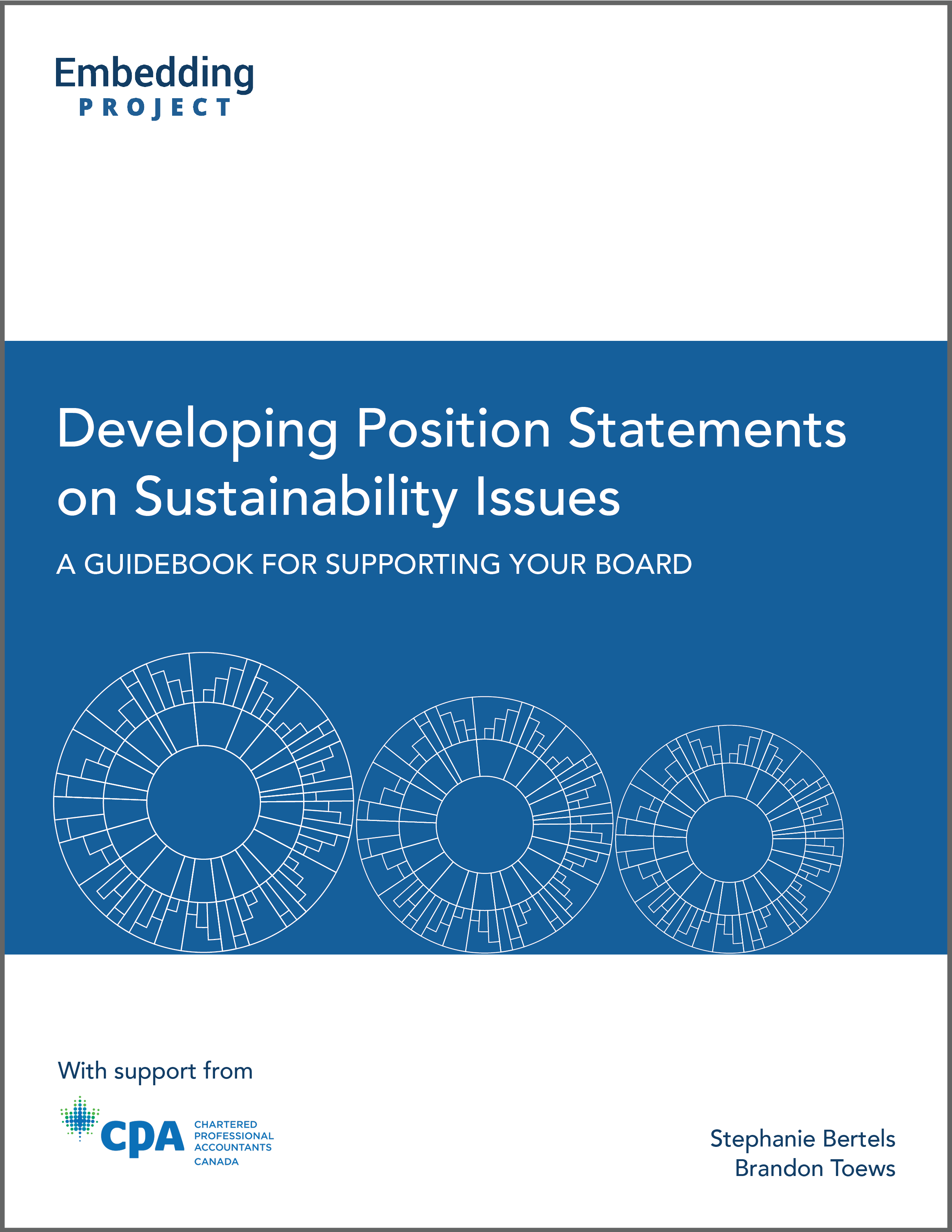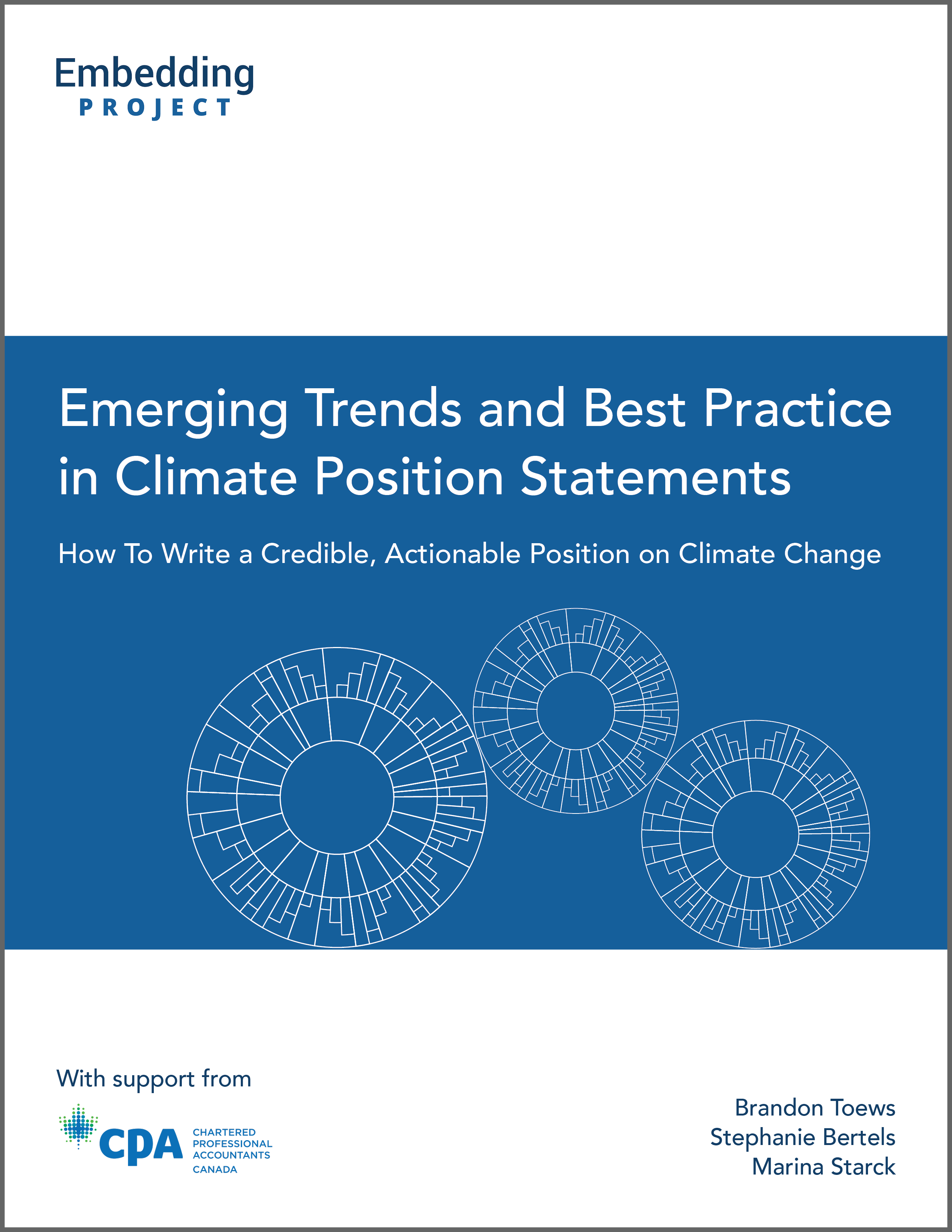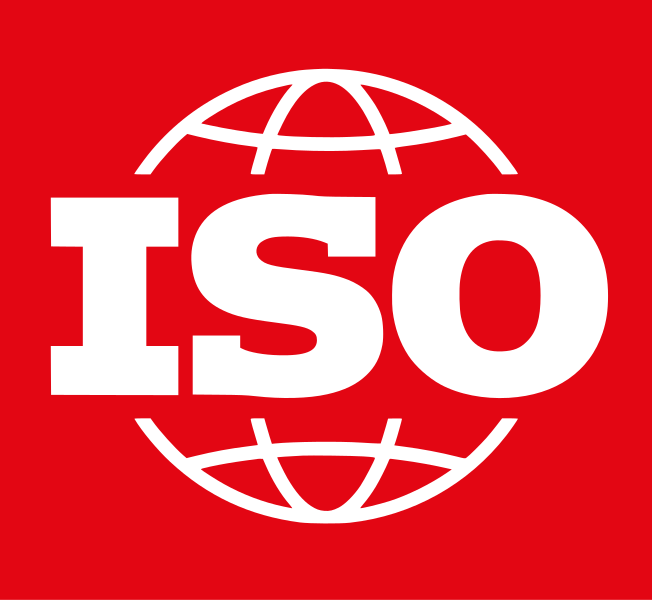Clarify Purpose
Description
These resources will help you to build sustainability into the fabric of your organisation by articulating a clear “reason for being” that aligns with doing your company's part in delivering systems value and is explicitly referenced in your mission, vision, and values.
Share this Practice on:LinkedIn
Resources
Social Purpose and Sustainability Governance
Position Database
Is your company interested in taking a public position on an ESG issue?
To help companies develop strong, clear positions, we will maintain a public database containing leading positions articulated by large companies globally.
Our governance guide outlines how companies should articulate their positions, and we have applied this criteria to the positions featured in this database.
Developing Position Statements on Sustainability Issues
There is growing pressure among companies to link social and environmental limits to corporate strategy and goal-setting. However, the result is often a lengthy document that fails to make strategic connections between specific issues and their implications on business decision-making. We developed this guidebook to help you articulate a concise and transparent board level position on key environmental, social, and governance issues. Drawing upon in-depth analyses of over 4,000 board position statements; over 200 interviews with CEOs, directors, and board chairs; and concepts outlined in our series on the Road to Context, this guidebook provides a checklist for crafting a contextual board position statement and includes examples from a range of industries and global settings.
Emerging Trends and Best Practice in Climate Position Statements
Climate change is happening, and the impacts are intensifying. Companies are expected to take a position on climate change and outline an appropriate response. The Embedding Project’s climate position guide helps companies to articulate a concise and transparent board level position on climate change. Drawing on in-depth analyses of over 2,600 climate position statements, this guidebook provides a checklist for crafting a climate position statement with concrete examples from a range of industries and global settings.
Taking a Credible Position on Nature
There is growing pressure on companies to publicly acknowledge the unprecedented nature loss we face, and what they plan to do to address it. To help them do so, we reviewed over 1,000 statements on nature loss, biodiversity, and ecosystem stewardship from a wide range of geographies and industries, and identified examples of how companies are explaining the issue of nature loss, linking the issue of nature loss to their strategy, and clarifying their commitments to protect and restore nature. We hope this guide is helpful to you in articulating your own credible position statement on protecting and restoring nature.
ISO 37000:2021 Governance of organizations - Guidance
This resource provides guidance on good, purpose-driven governance of organisations. It provides principles and key aspects of practices to support governing persons and groups on how to meet their responsibilities so that the organisations they govern can fulfil their purpose.
The Board’s Role in Sustainability: A new framework for getting directors behind ESG efforts
Although most CEOs now recognize that ESG issues should inform their corporate strategy, corporate boards continue to be a source of friction when it comes to linking corporate purpose to strategy and performance. To address this, Rupert Younger - the director of the Oxford University Centre for Corporate Reputation and the chair of the Enacting Purpose Initiative - created the SCORE framework. This framework outlines five actions that will help boards to articulate their purpose and to embed it within their organisation's value proposition. These actions include Simplifying your purpose and making it straightforward; Connecting to strategy and capital allocation decisions; taking Ownership of purpose; Rewarding executives appropriately by linking compensation with purpose; and Exemplifying purpose in both quantitative and qualitative terms.
Purpose and Stakeholder Governance Playbook: Your Guide to Enhancing Your Board’s Oversight of Purpose and Stakeholders
This guide was created to help senior leaders to better understand the role of corporate boards in governing the transition from a profit purpose to a social purpose, and from shareholder value creation to stakeholder value creation. It provides set of guidelines that directors, boards, and governance professionals can use to improve board oversight of these transformative practices. The guide is organised into four sections that will help you to create a purpose governance roadmap; create a stakeholder governance roadmap; embed purpose and stakeholder oversight in committee mandates; and better learn about board approaches to purpose and stakeholder governance. Each of these sections features key responsibilities and questions that directors can use to frame engagement on the topic.
Building Social Purpose
PAS 808: Purpose-Driven Organisations: Worldviews, Principles and Behaviours
This guidance document from the BSI Group sets out what it means to be a purpose-driven organisation in practice. This resource outlines the worldviews, principles, and the associated behaviours and activities of a purpose-driven organisation, as well as common terms and definitions related to purpose. This is a good starting point for business leaders, executives, and governance professionals who want to understand what it means to be a purpose-driven organisation, and how such organisations approach decisions-making,
Definition of a Social Purpose Business
A social purpose business is one whose enduring reason for being is to create a better world. As pressure mounts on industry to redefine its role in society and to help communities navigate turbulence, it has become paramount for companies to evaluate how their growth and reach can become a uniquely positive force. This short paper from Coro Strandberg will help you to understand what social purpose is and what it is not, as well as how you can distinguish it from mission, vision, and values.
Purpose Governance: A New Role for Boards
As pressure mounts on industry to redefine its role in society and to help communities navigate turbulence, it has become paramount for companies to evaluate how their growth and reach can become a uniquely positive force. This short paper from Coro Strandberg answers some of the most common questions related to purpose governance, such as the role of boards and governance professionals and the implications for public and non-profit sectors.
Purpose Governance Framework: Your Board Roadmap for Developing and Governing a Corporate Purpose
This resource will help you to ensure that your company's purpose remains relevant and future-fit, as well as to show that the company is executing on its purpose. It provides a comprehensive breakdown of the steps and roles that boards and governance professionals can take to develop and govern a consistent and effective corporate purpose.
Enacting Purpose within the Modern Corporation: A Framework for Boards of Directors
This report draws upon research and best practice findings and provides a simple framework and key definitions that will help you to translate purpose-related intent into practice and to embed purpose into your strategy.
The Belief-Driven Employee
The "2021 Edelman Trust Barometer Special Report" revealed that over 60% of respondents choose their employer based on values and beliefs, and tend to depart employment to find a better values fit. This article from Richard Edelman, CEO of Edelman, sounds the alarm on a sea-change in employee commitment and behaviour; explains why companies should want belief-driven employees; and provides suggestions for how you can build trust by embedding purpose within your business.
Purpose in Practice Case Studies
These short, inspirational videos from the Social Purpose Institute show how select companies have reoriented their strategy around social purpose, and how this has helped them to take a proactive role in safeguarding the systems they depend on. If you are in the process of learning about the intersection of strategy and purpose, these videos are a good starting point.
Bringing Corporate Purpose into the Mainstream: Directions for Canadian Law
This paper produced by the David Suzuki Foundation can help you understand why corporate purpose should include social and environmental objectives. It outlines different definitions of corporate purpose, provides a brief legal history, and explains the business case for broadening corporate purpose. It also reviews recent developments in Canadian, UK, and French law regarding corporate purpose, and - drawing on these examples - provides recommendations that can help companies to advance the credibility of their corporate purpose. The insights and potential implications of this report will be especially useful to strategy and leadership teams.
Share this Practice on:LinkedIn









